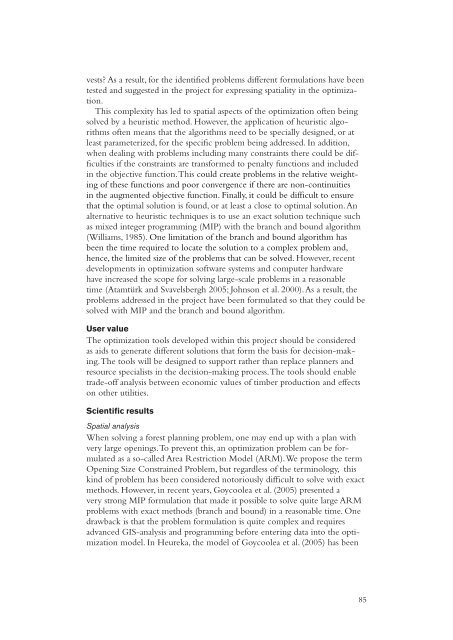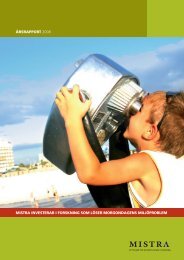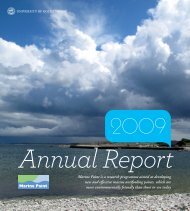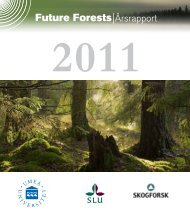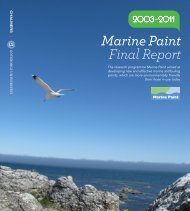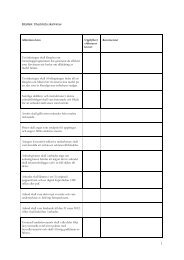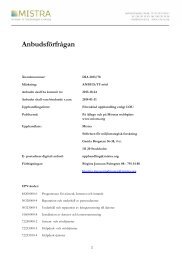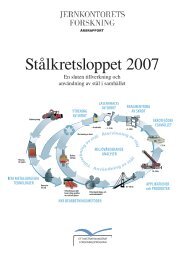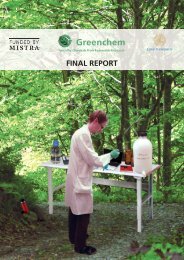The Heureka Research Programme - Mistra
The Heureka Research Programme - Mistra
The Heureka Research Programme - Mistra
You also want an ePaper? Increase the reach of your titles
YUMPU automatically turns print PDFs into web optimized ePapers that Google loves.
vests? As a result, for the identified problems different formulations have beentested and suggested in the project for expressing spatiality in the optimization.This complexity has led to spatial aspects of the optimization often beingsolved by a heuristic method. However, the application of heuristic algorithmsoften means that the algorithms need to be specially designed, or atleast parameterized, for the specific problem being addressed. In addition,when dealing with problems including many constraints there could be difficultiesif the constraints are transformed to penalty functions and includedin the objective function. This could create problems in the relative weightingof these functions and poor convergence if there are non-continuitiesin the augmented objective function. Finally, it could be difficult to ensurethat the optimal solution is found, or at least a close to optimal solution. Analternative to heuristic techniques is to use an exact solution technique suchas mixed integer programming (MIP) with the branch and bound algorithm(Williams, 1985). One limitation of the branch and bound algorithm hasbeen the time required to locate the solution to a complex problem and,hence, the limited size of the problems that can be solved. However, recentdevelopments in optimization software systems and computer hardwarehave increased the scope for solving large-scale problems in a reasonabletime (Atamtürk and Svavelsbergh 2005; Johnson et al. 2000). As a result, theproblems addressed in the project have been formulated so that they could besolved with MIP and the branch and bound algorithm.User value<strong>The</strong> optimization tools developed within this project should be consideredas aids to generate different solutions that form the basis for decision-making.<strong>The</strong> tools will be designed to support rather than replace planners andresource specialists in the decision-making process. <strong>The</strong> tools should enabletrade-off analysis between economic values of timber production and effectson other utilities.Scientific resultsSpatial analysisWhen solving a forest planning problem, one may end up with a plan withvery large openings. To prevent this, an optimization problem can be formulatedas a so-called Area Restriction Model (ARM). We propose the termOpening Size Constrained Problem, but regardless of the terminology, thiskind of problem has been considered notoriously difficult to solve with exactmethods. However, in recent years, Goycoolea et al. (2005) presented avery strong MIP formulation that made it possible to solve quite large ARMproblems with exact methods (branch and bound) in a reasonable time. Onedrawback is that the problem formulation is quite complex and requiresadvanced GIS-analysis and programming before entering data into the optimizationmodel. In <strong>Heureka</strong>, the model of Goycoolea et al. (2005) has been85


